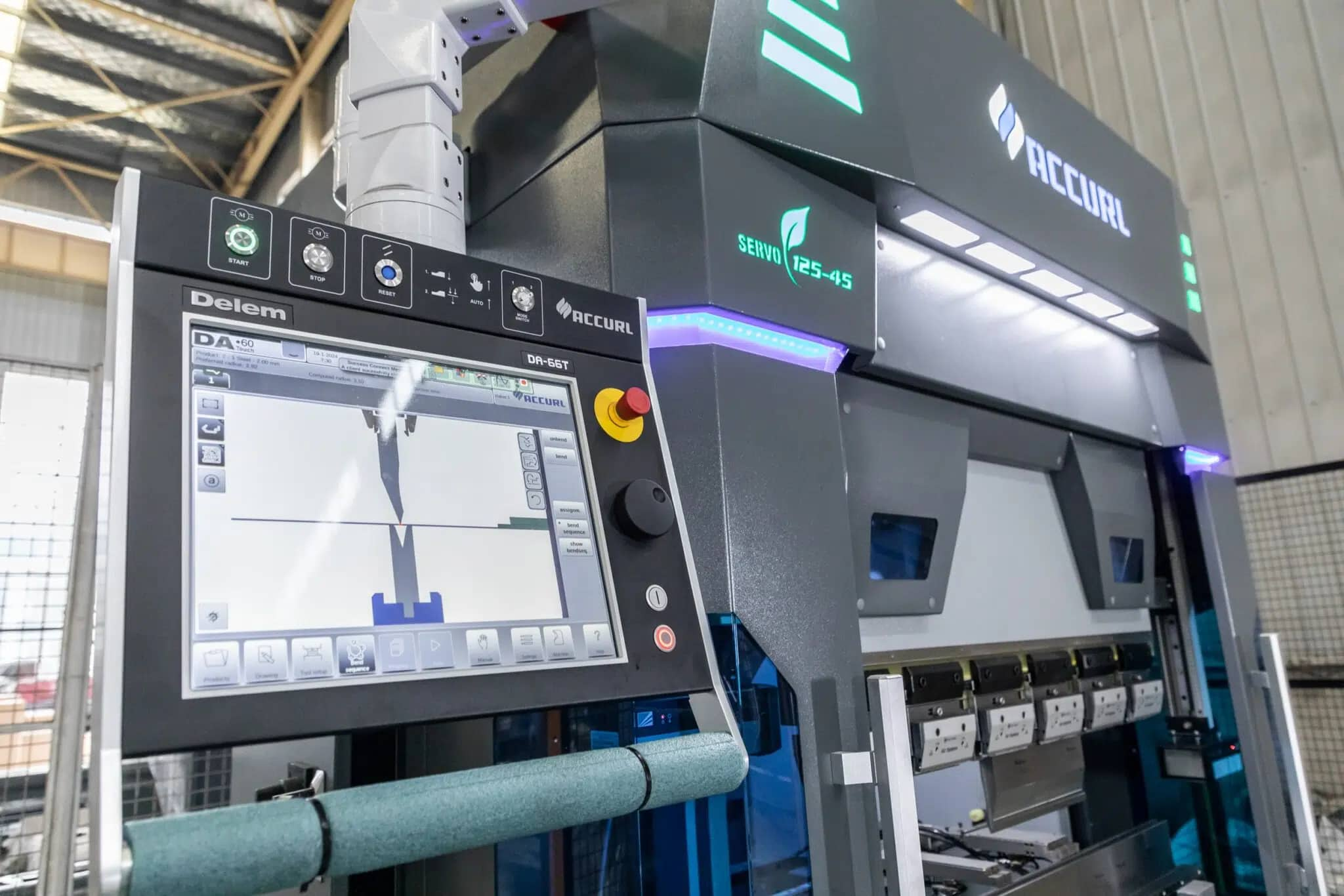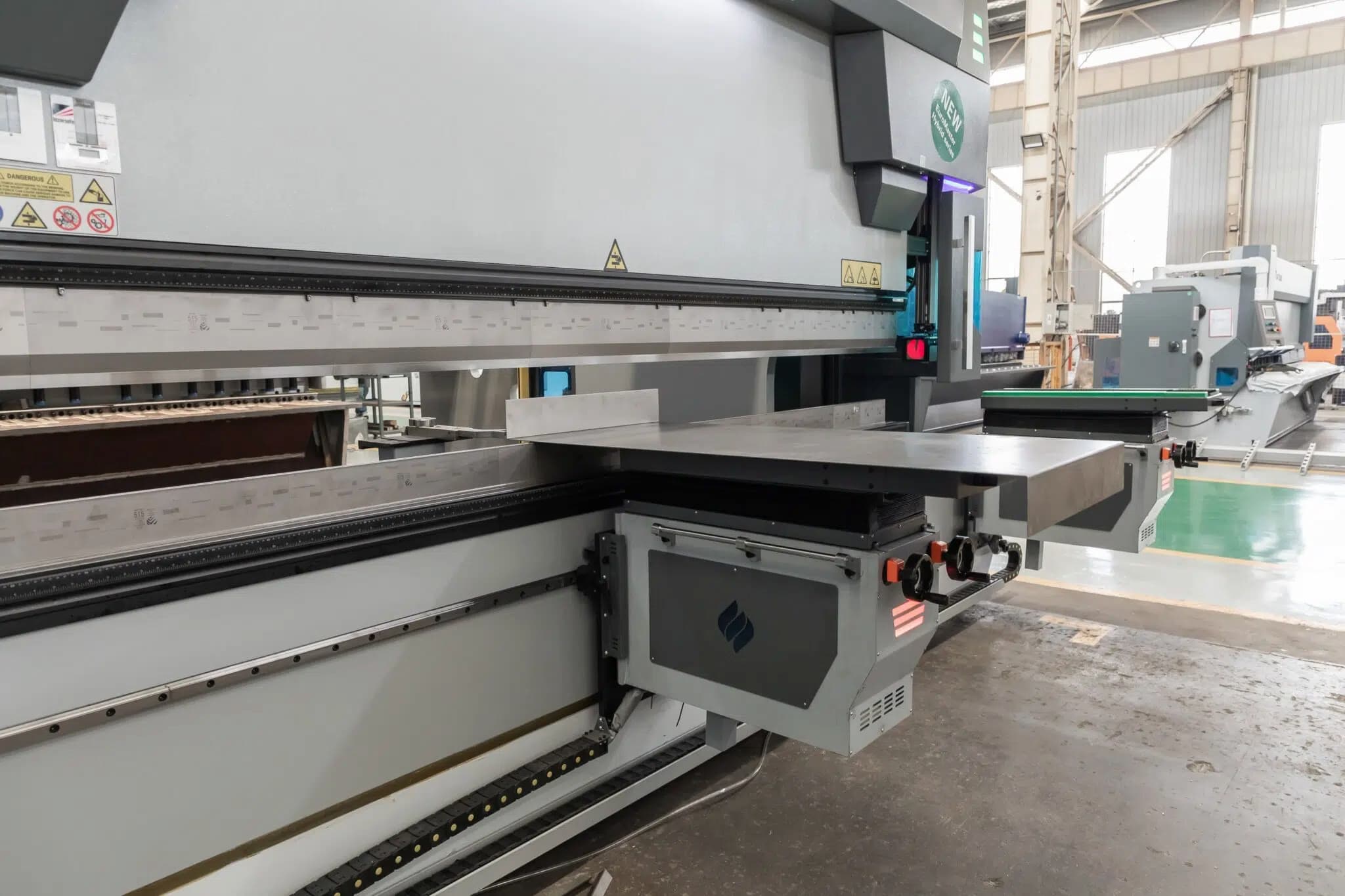Che cosa sta cercando
?
Che cosa sta cercando
?
Analisi della catena del valore delle presse piegatrici CNC
Jul 03, 20251.Fornitura di materie prime e componenti principali
Collegamento chiave
Materiali metallici
Materie prime di lamiera come piastre di acciaio e leghe di alluminio.
Punto di valore aggiunto: la resistenza e la duttilità del materiale influiscono direttamente sulla precisione di piegatura e sulla durata utile dello stampo.
Componenti principali
Sistema idraulico/servo → Determina la potenza e l'efficienza energetica della macchina.
Il sistema di controllo CNC → influisce sulla flessibilità di programmazione e sulla precisione operativa.
Utensili (Wila, Rocca) → Utensili specializzati (come tipo V, tipo R) per soddisfare requisiti di piegatura complessi.
Sfida
I sistemi idraulici di fascia alta e i controller CNC dipendono dalle importazioni (i produttori cinesi stanno accelerando la sostituzione nazionale).

2. Progettazione e produzione
Collegamento chiave
Progettazione della struttura meccanica
La rigidità del telaio e la precisione delle guide influiscono sulla stabilità a lungo termine.
Punto di valore aggiunto: l'analisi degli elementi finiti (FEA) ottimizza la struttura e riduce le deformazioni.
Integrazione intelligente delle funzioni
Rilevamento dell'angolo laser, compensazione del rimbalzo AI.
Punti di valore aggiunto: riduzione dei costi di tentativi ed errori e aumento del tasso di successo del primo articolo.
Distribuzione dei costi
Struttura meccanica (40%), sistema di controllo (30%), sistema idraulico/servo (20%), altri (10%).
3. Distribuzione e assistenza post-vendita
Collegamento chiave
Canali di vendita
Vendita diretta (marchi di alta gamma come TRUMPF), agenti (mercati emergenti), piattaforme online.
Punti di valore aggiunto: Offrire un utilizzo di prova e formazione tecnica (ad esempio corsi sull'uso del sistema di controllo Delem).
Servizio post-vendita
Diagnosi remota (moduli IoT), fornitura rapida di ricambi (stampi, valvole idrauliche).
Punto di valore aggiunto: i contratti di servizio (sistema di canone annuale) contribuiscono per il 20-30% ai profitti del produttore.
differenze regionali
I mercati europeo e americano prediligono i servizi all-inclusive, mentre il mercato asiatico presta maggiore attenzione al rapporto costi-prestazioni e alla velocità di risposta.
4. Applicazioni terminali e valore per l'utente
Principali campi di applicazione
Lavorazione della lamiera: telai, armadi (è richiesta la coerenza del lotto).
Produzione automobilistica: componenti strutturali della carrozzeria (requisiti di alta precisione).
Aerospaziale: componenti leggeri (piegatura di materiali speciali).
Richieste principali degli utenti
Produzione in piccoli lotti: cambio rapido dello stampo.
Automazione di massa: integrazione dei robot.
5. Collegamenti ausiliari della catena del valore
Software e strumenti digitali
Software di programmazione offline (Radan, AutoPOL) → Riduzione dei tempi di inattività della macchina.
Simulazione (come AutoForm) → Prevedere il rimbalzo del materiale e ottimizzare i processi.
Fornitore di servizi di terze parti
Personalizzazione dello stampo (piccoli produttori locali soddisfano requisiti non standard).
Formazione tecnica (college comunitari, corsi di certificazione dei produttori).
La tendenza all'ottimizzazione della catena del valore
Integrazione a monte
I principali produttori sviluppano i propri sistemi di controllo per ridurre la dipendenza esterna.
Espansione a valle
Fornire il servizio "Bending-as-a-Service" e addebitare i costi in base alla durata dell'utilizzo.
Catena del valore verde
Le piegatrici servoassistite elettriche (come la Salvagnini P4) sostituiscono i modelli idraulici, riducendo il consumo energetico di oltre il 30%.
Riepilogo:
Nella catena del valore di Pressa piegatrice CNC:
Zona ad alto profitto: progettazione del sistema di controllo, software intelligente, assistenza post-vendita.
Collegamenti che creano problemi: localizzazione dei componenti principali (i produttori cinesi stanno facendo progressi), carenza di operatori qualificati.

Opportunità future:
Modello di leasing (abbassamento della soglia di ingresso per le piccole e medie imprese).
L'intelligenza artificiale e l'IoT consentono la manutenzione predittiva (ad esempio, la previsione di guasti idraulici tramite dati sulle vibrazioni).
Ottimizzando la catena del valore, i produttori possono trasformarsi da "fornitori di apparecchiature" a "fornitori di soluzioni" e ottenere un valore aggiunto più elevato
Se avete altre idee, contattateci!
Tel: +86 -18855551088
E-mail: Info@Accurl.com
WhatsApp/Cellulare: +86 -18855551088